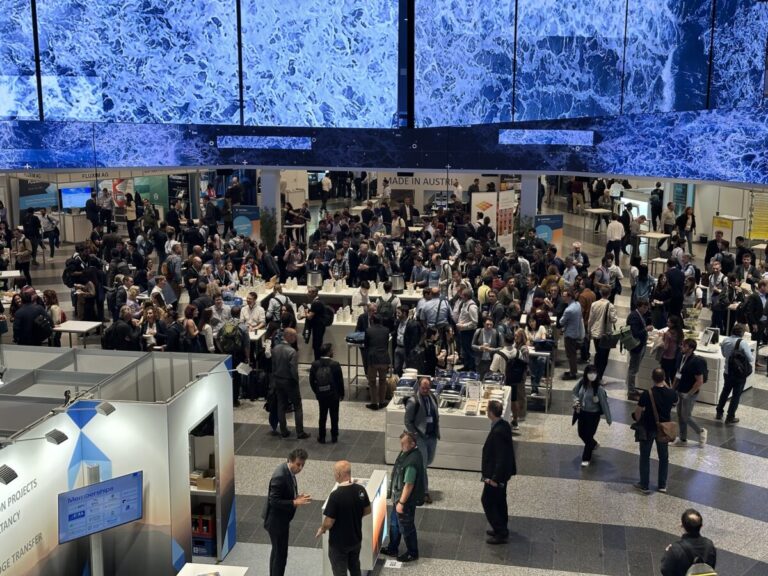The 41st European Photovoltaic Solar Energy Conference (EU PVSEC) comes to an end this afternoon in Vienna. The discussions at this year’s event leave little doubt that solar installations will continue to see impressive growth in the coming years. There was a lot of optimism all week about new policies and technical innovations that will bring more solar energy into both electric grids and urban and rural environments. For Europe, however, the lack of any meaningful capacity to produce these promising technologies locally is putting a damper on things.
French scientist Daniel Lincot accepted the Becquerel Prize on Monday for his contributions to research and industrial development in solar photovoltaics, telling the EU PVSEC audience that work on solar energy “cannot stop at the door from the laboratory,” and that solar energy must develop further “to go to the people as the energy of a citizen.”
A fitting introduction to a conference that aims to bring together the PV industry and research communities. This year, EU PVSEC was attended by 1,800 people from 60 countries and featured more than 1,100 presentations and panel discussions over five days. This year’s program went far beyond the typical research into achieving higher cell efficiencies.
During the opening session, Technical Program Chair Robert Kenny noted an increase in the number of papers presented in the field of PV systems and engineering, later stating: “I would like to emphasize the need to identify where we should prioritize the deployment of large amounts of PV, and we see a lot of practical experience with systems in a range of sectors, such as agrivoltaics, BIPV and floating PV.”
Sessions on these specific applications, as well as efforts to integrate more PV-generated electricity into electricity grids, illustrated the inherent flexibility of PV, as well as the growing need for such applications to complement ‘conventional’ solar installations. Also during the opening session on Monday, Austria’s Minister for Climate Action, Environment, Energy, Mobility, Innovation and Technology, Leonore Gewessler, called on experts gathered in Vienna to focus on “actionable ideas to accelerate the energy transition”, which that they and other policymakers can move forward with.
Christian Thiel of the European Union’s Join Research Center optimistically noted that he expects more than 1 TW of PV to be installed within one year this side of 2030, and that Europe will be the first carbon-neutral continent by 2050.
Production prospects
For the European industry, however, the picture is less rosy. Following a presentation from 3Sun’s Marina Foti on the company’s cell and module factory in Sicily, a member of the audience asked how they would continue to monitor the struggles and closures at other European manufacturers. And Foti noted that more policy support would be needed to make manufacturing in Europe even remotely competitive with other regions.
Rutger Schlatmann, head of solar at Helmholtz-Zentrum Berlin, warned that “upstream is not going well for Europe” and said the “huge innovation potential of PV should not be left to one region.” He also noted that vested interests of other industries and their strong influence on policy could hold back the development of renewable energy.
Others noted that even starting small could give Europe a better chance at future manufacturing capacity, and that Europe should retain large industries whether they use solar energy or not.
“We will not see a Chinese scale in Europe, but we must learn lessons from it,” Futurasun CEO Alessandro Barin said during a panel discussion. “And you have to start somewhere, for example when assembling modules.”
This content is copyrighted and may not be reused. If you would like to collaborate with us and reuse some of our content, please contact: editors@pv-magazine.com.


